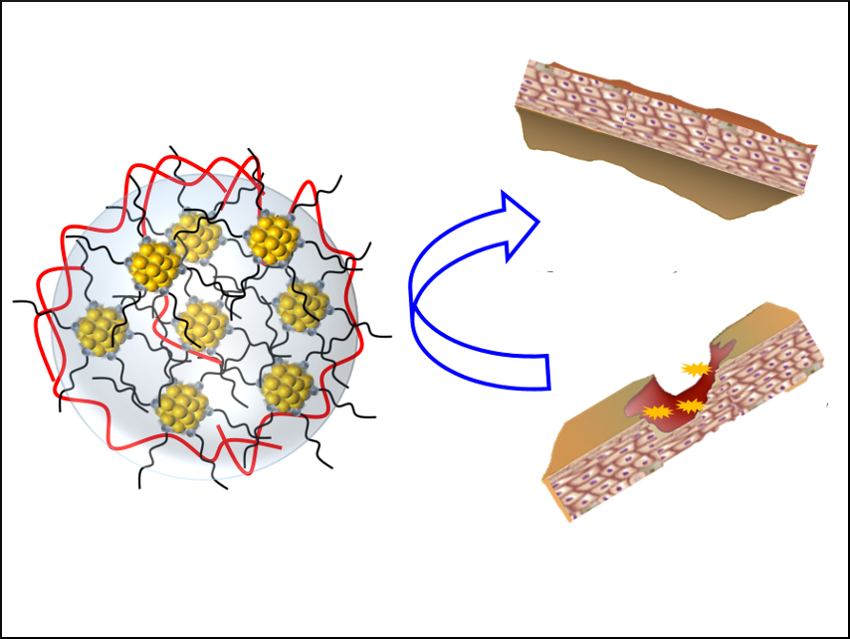Wound healing is a complex process. It can be seriously hampered by bacterial infections, especially if the bacteria are multidrug-resistant. Antimicrobial nanoparticles could help to prevent wound infections. In turn, combining these nanoparticles with a biocompatible polymer could help to prevent possible harmful side effects caused by the nanoparticles and improve their effectiveness.
Nirmal Goswami, Krasimir Vasilev and colleagues, University of South Australia, Mawson Lakes, have developed an antimicrobial nanoaggregate composed of ultra-small thiolate-protected gold nanoclusters (AuNCs) and the biocompatible antibacterial polymer chitosan (CS). AuNCs have useful properties such as stability, inertness (they do not easily dissociate into ions), and biocompatibility. CS has been widely used as a wound dressing material due to beneficial features such as antibacterial behavior and low cytotoxicity toward mammalian cells.
Mercaptosuccinic acid (MSA) was used as a thiol ligand for the AuNCs. MSA‐protected AuNCs were prepared using sodium borohydride (NaBH4) as reducing agent. Then the nanoclusters were added to a CS solution. The components self‐assembled to form AuNCs/CS nanoaggregates.
The synergetic combination created from the AuNCs and CS has enhanced antibacterial activity against both Gram-negative Escherichia coli and Gram-positive Staphylococcus aureus bacterial strains compared to the individual components. In addition, the nanoaggregates facilitate rapid wound healing without exhibiting any cytotoxic effects in mammalian cells.
- Ultra-small Gold Nanoclusters Based Antibacterial Nanoaggregates for Infectious Wound Healing,
Aswathy Ravindran Girija, Sivakumar Balasubramanian, Richard Bright, Allison J. Cowin, Nirmal Goswami, Krasimir Vasilev,
ChemNanoMat 2019.
https://doi.org/10.1002/cnma.201900366




